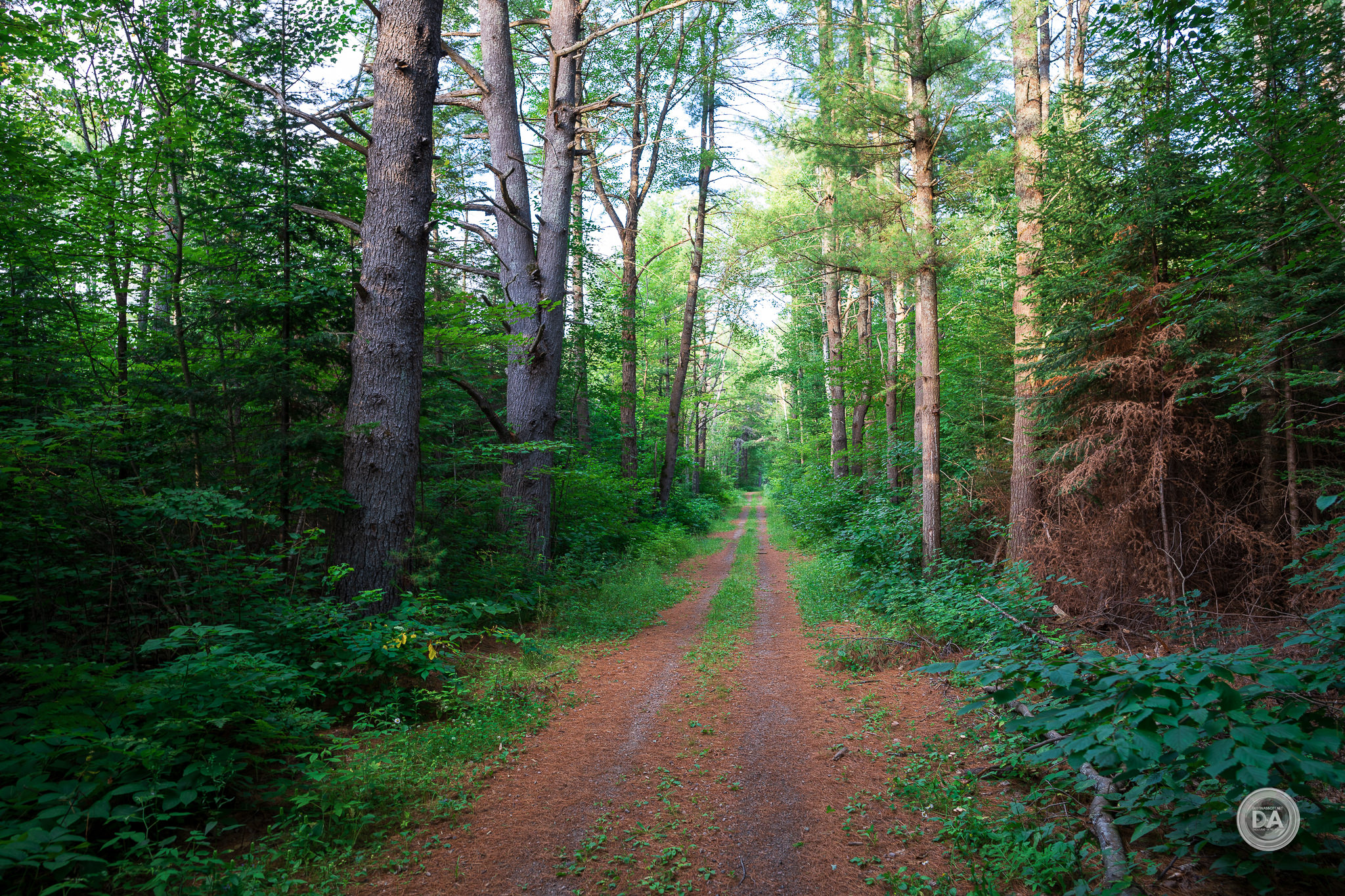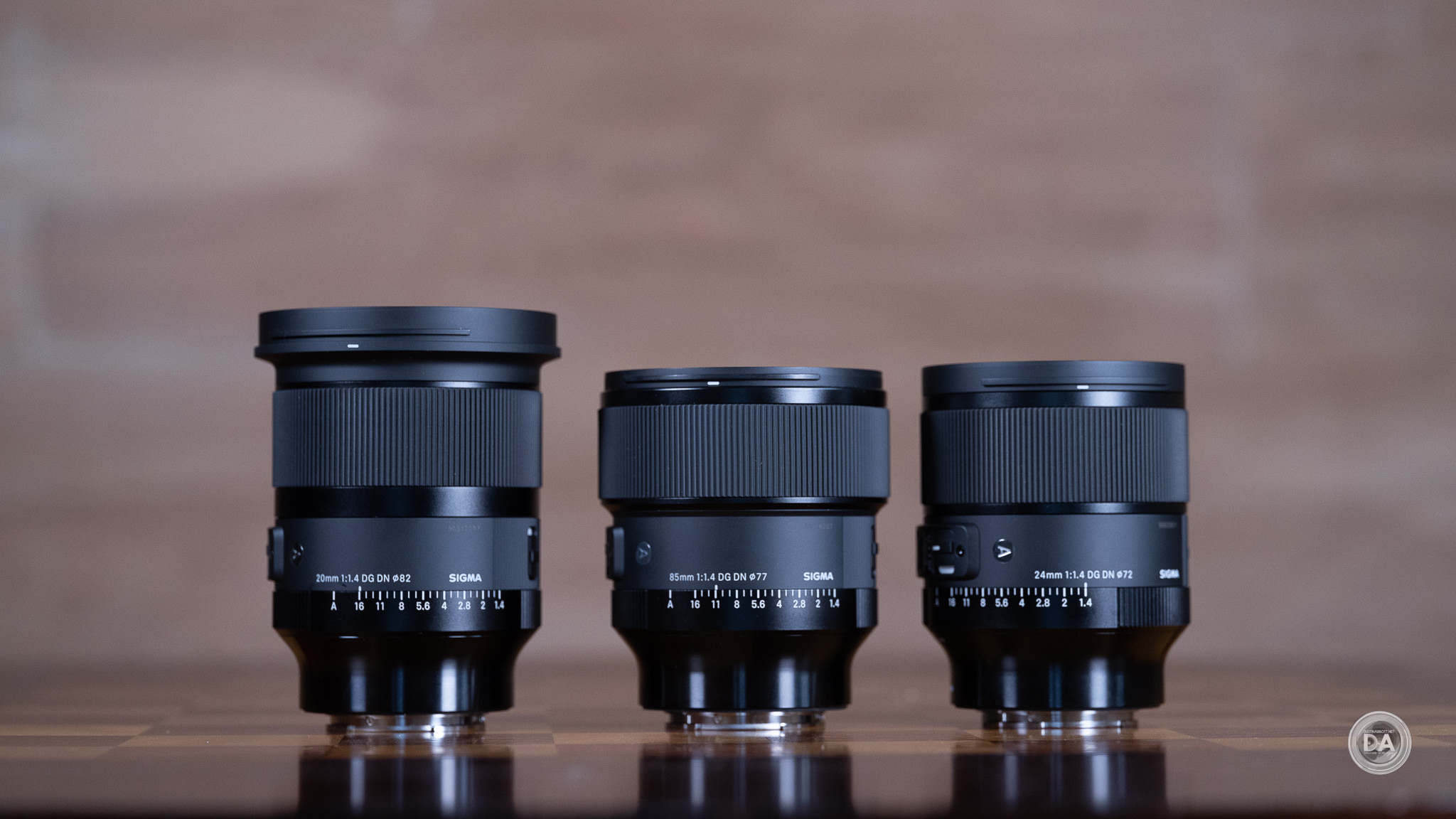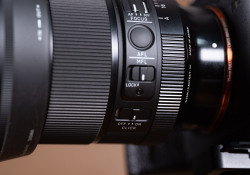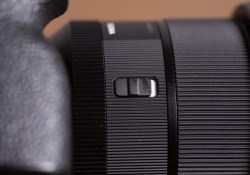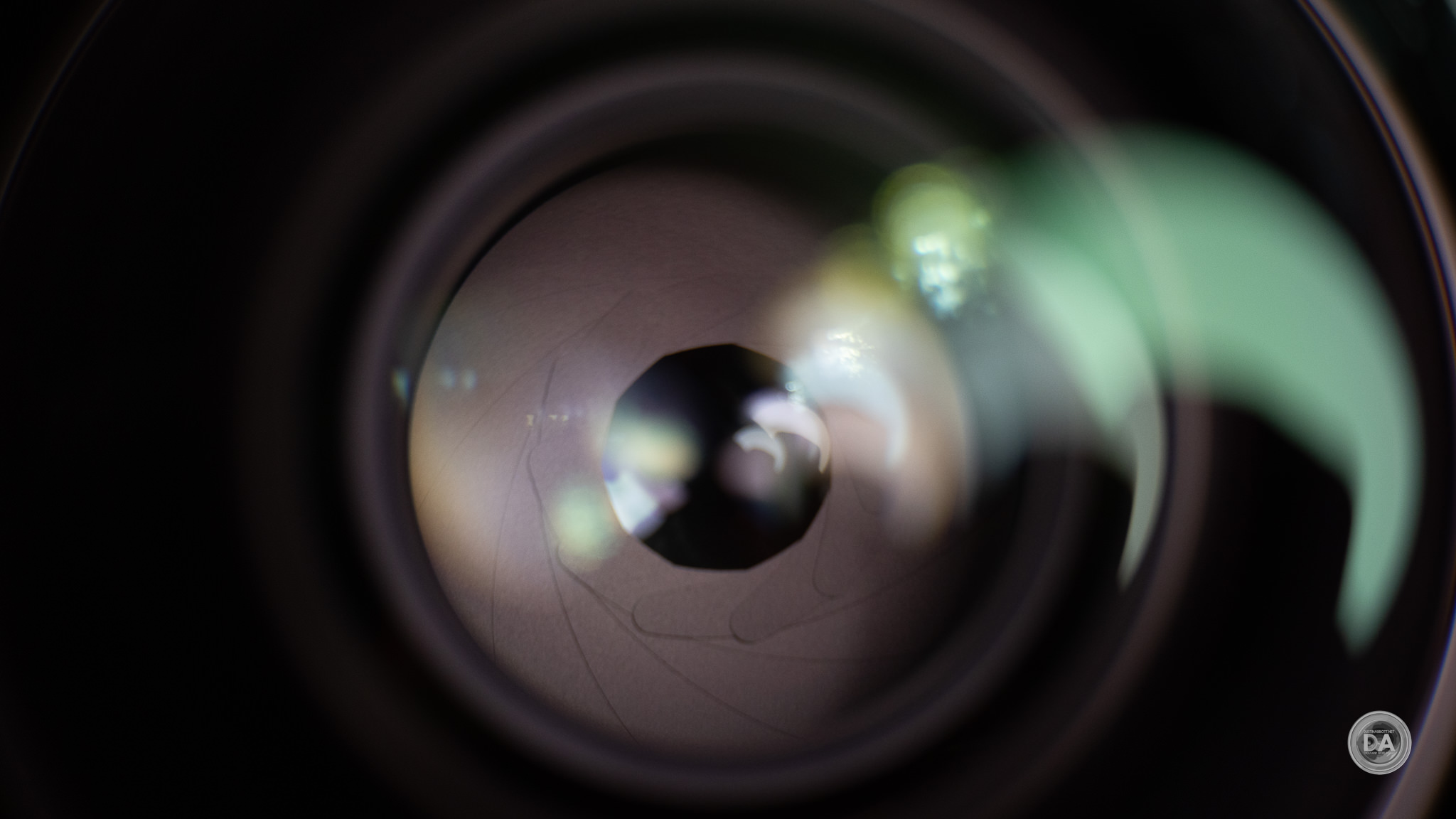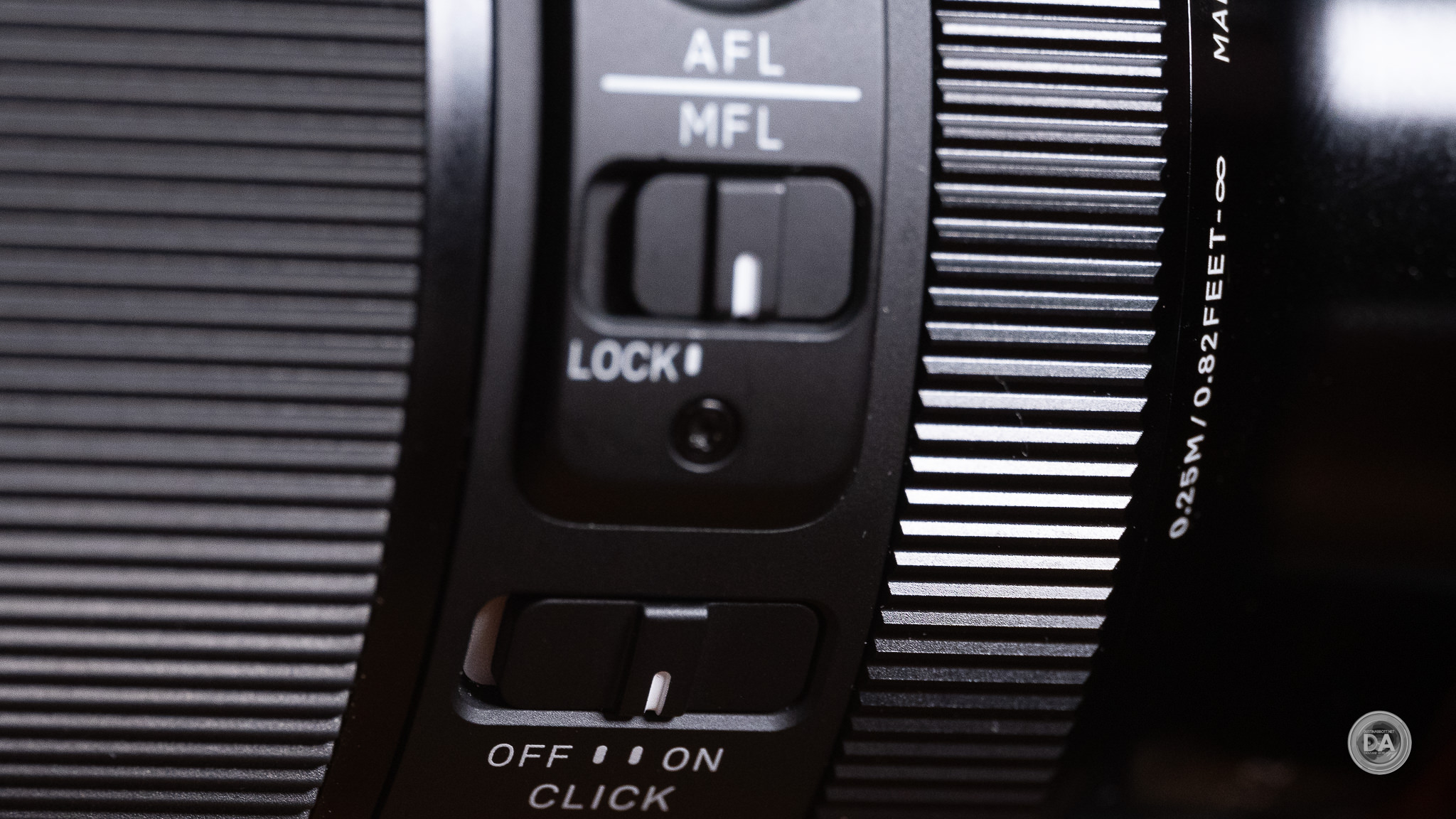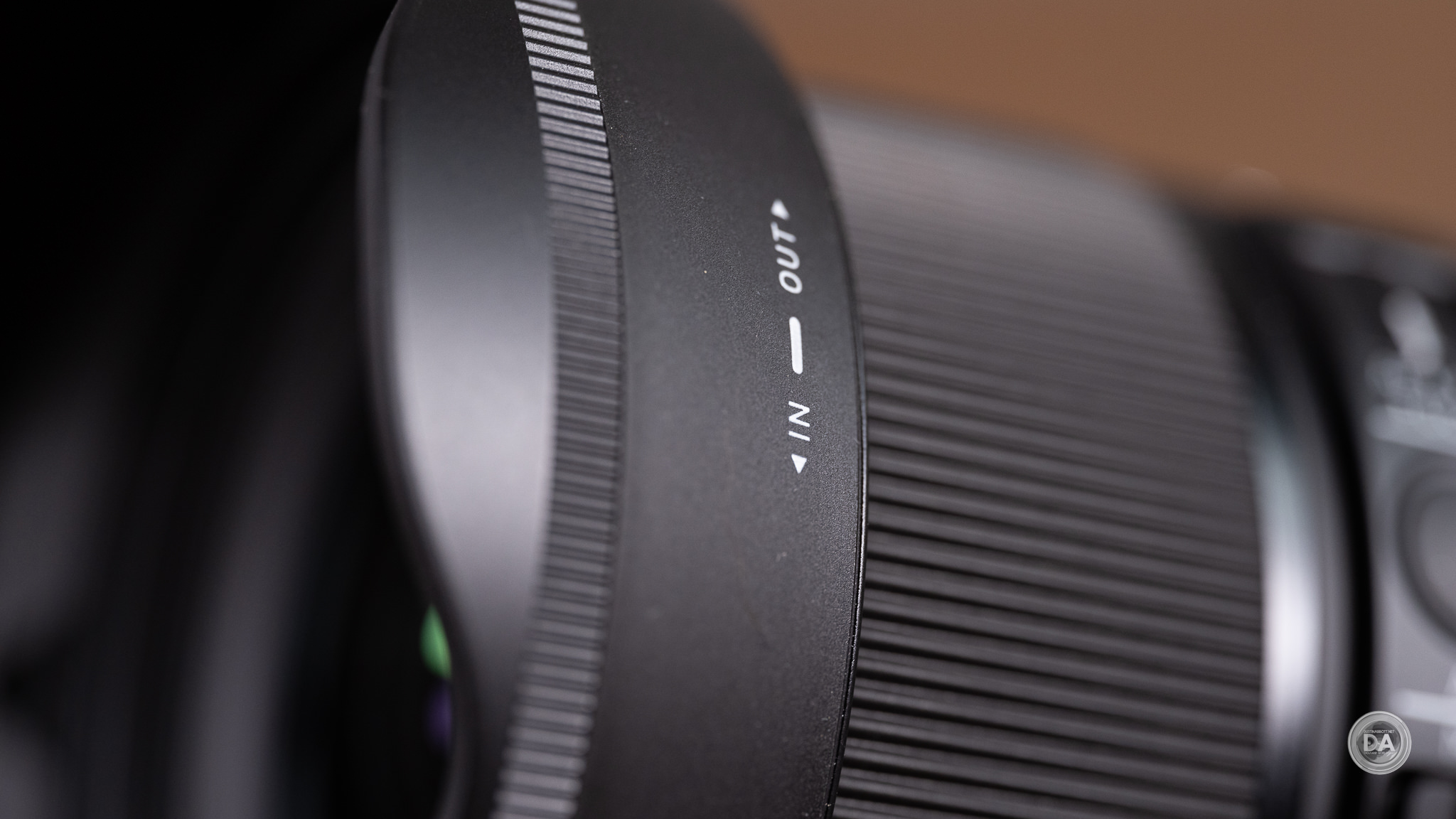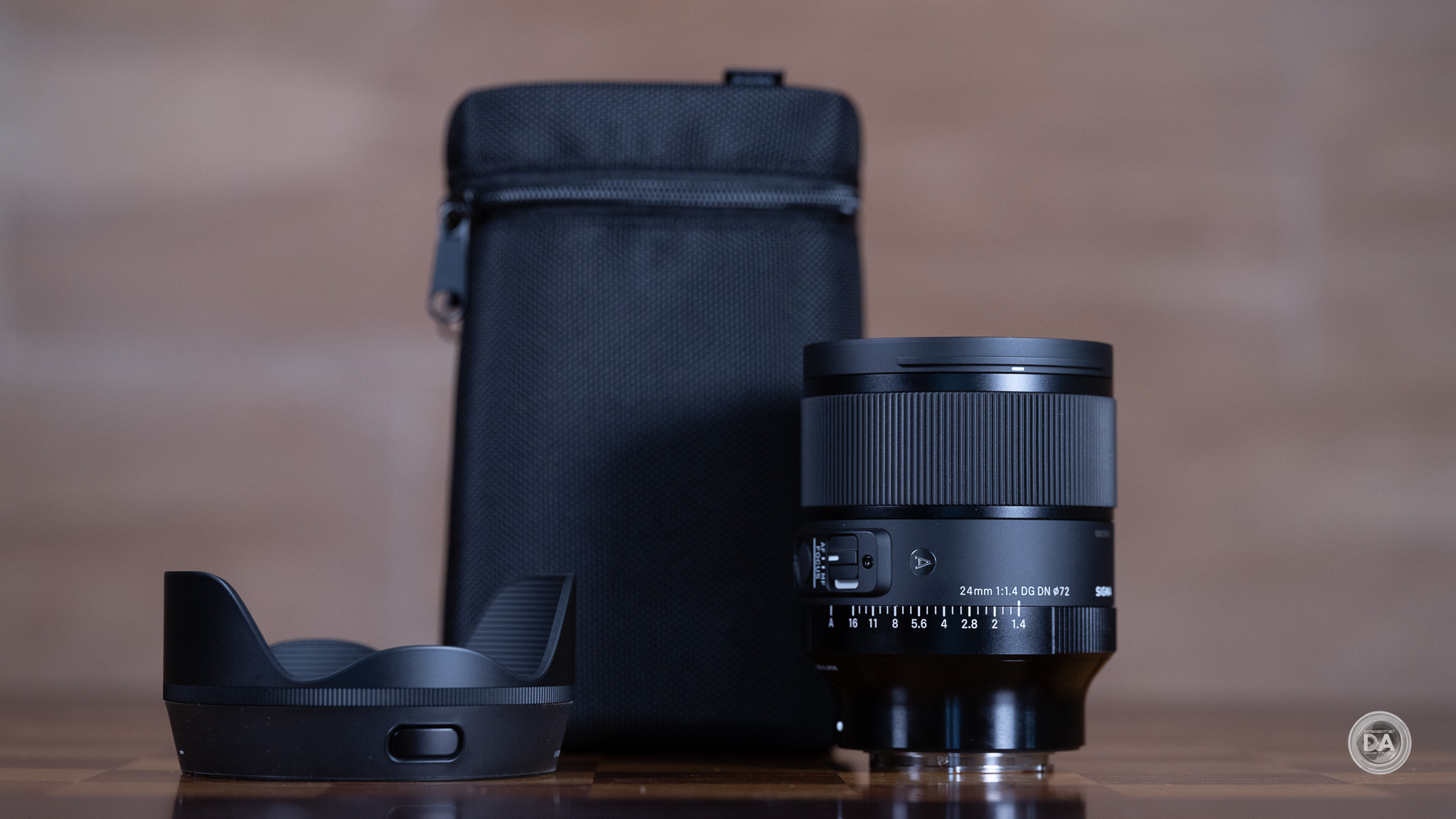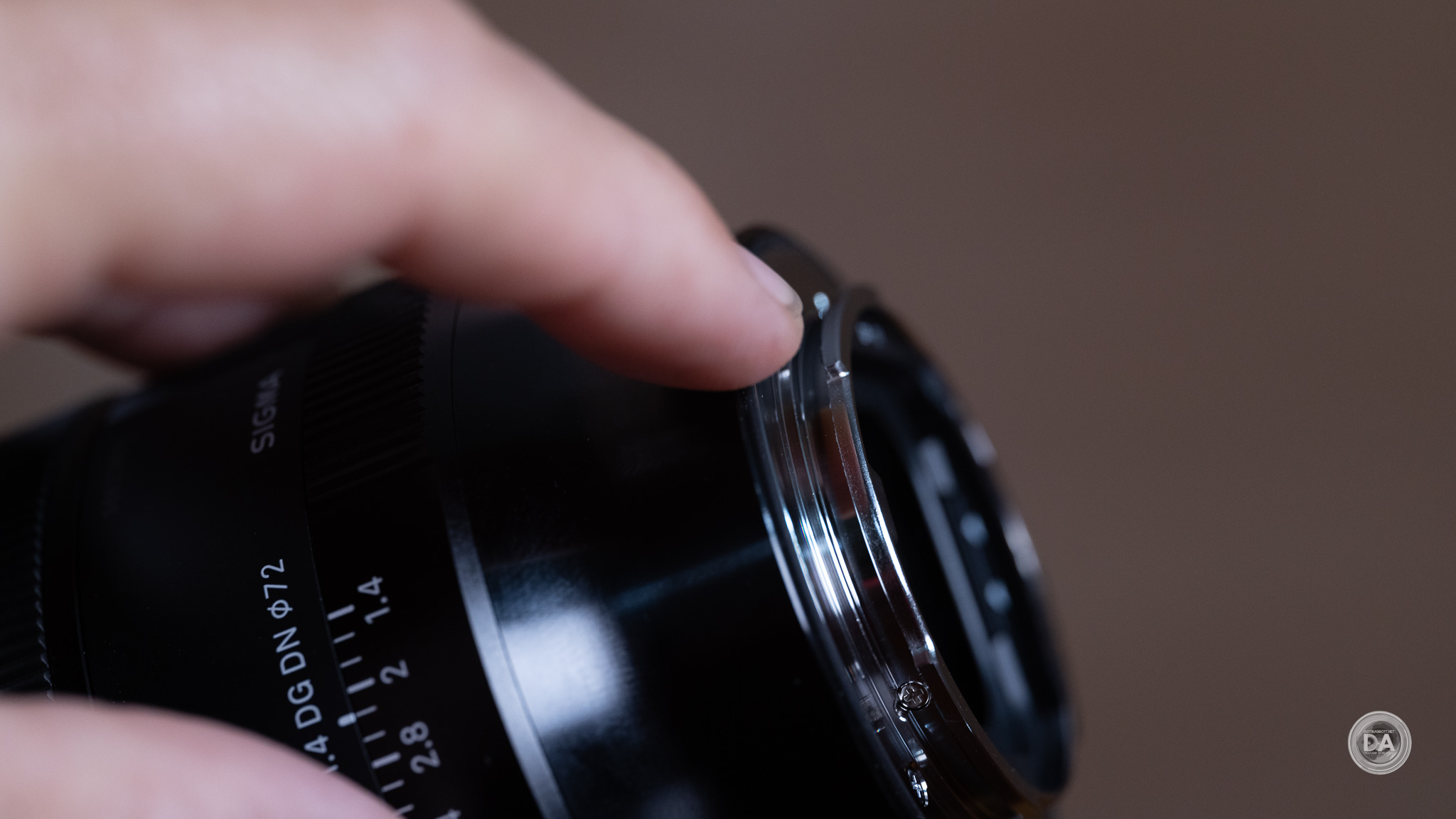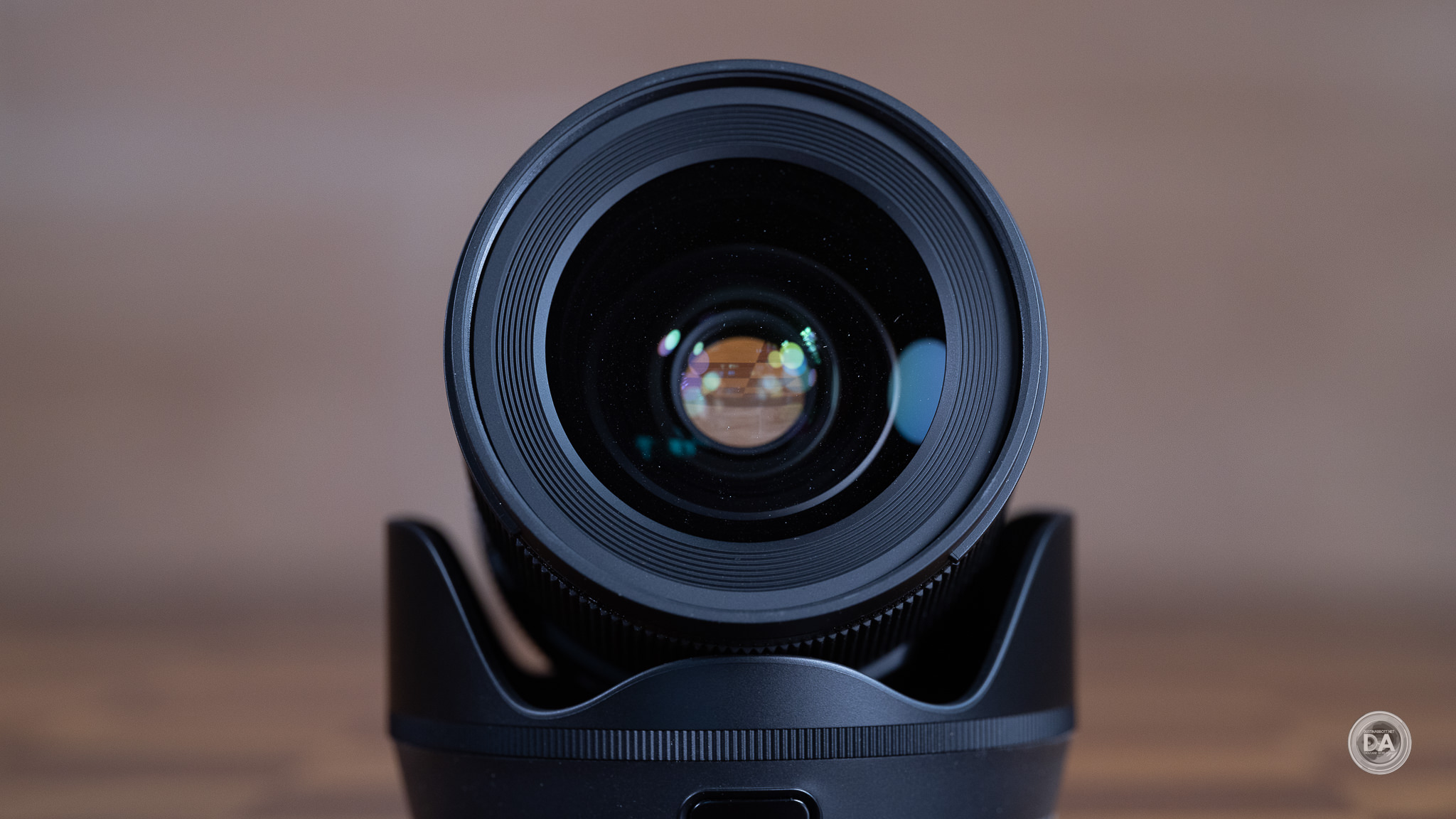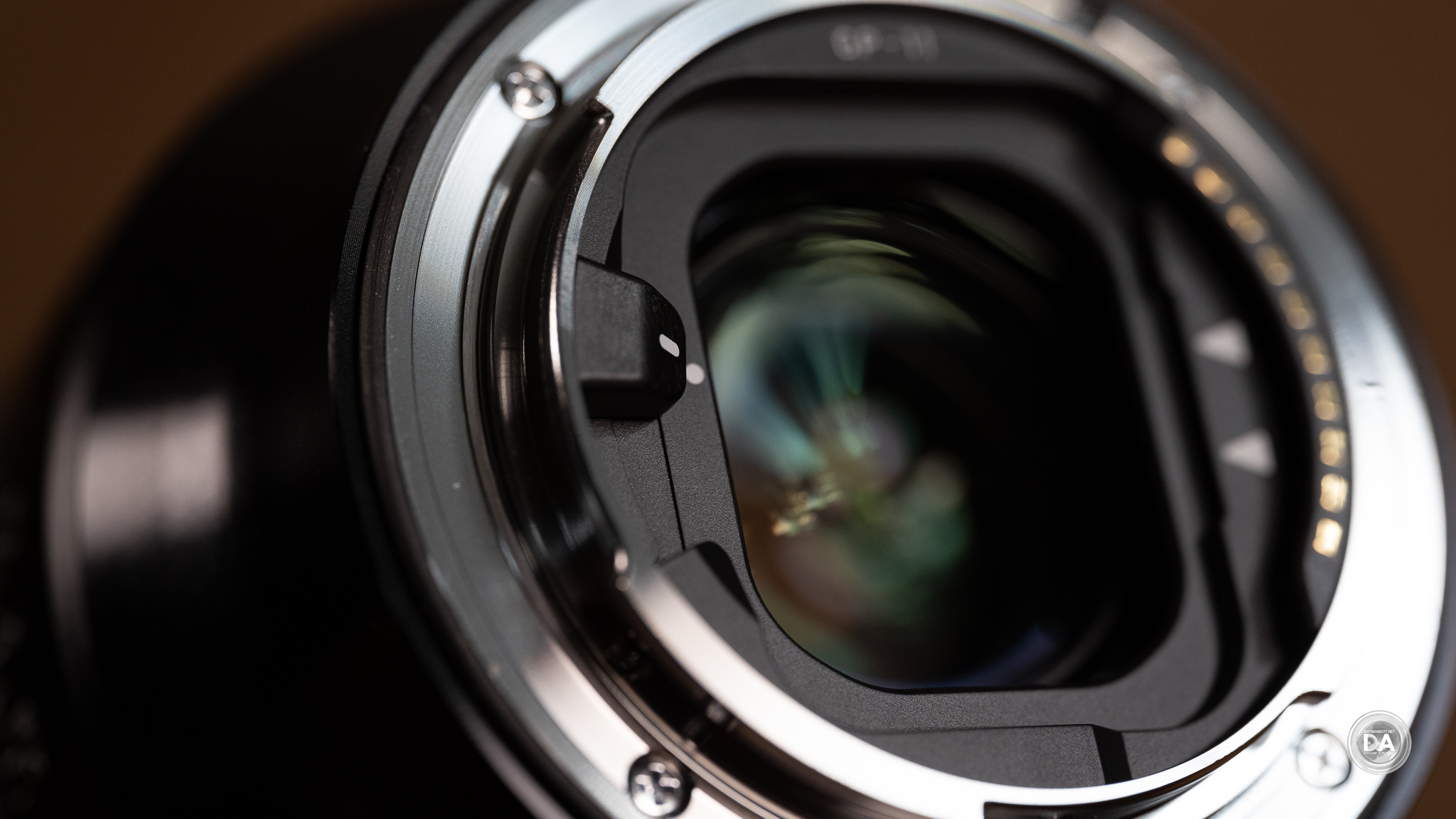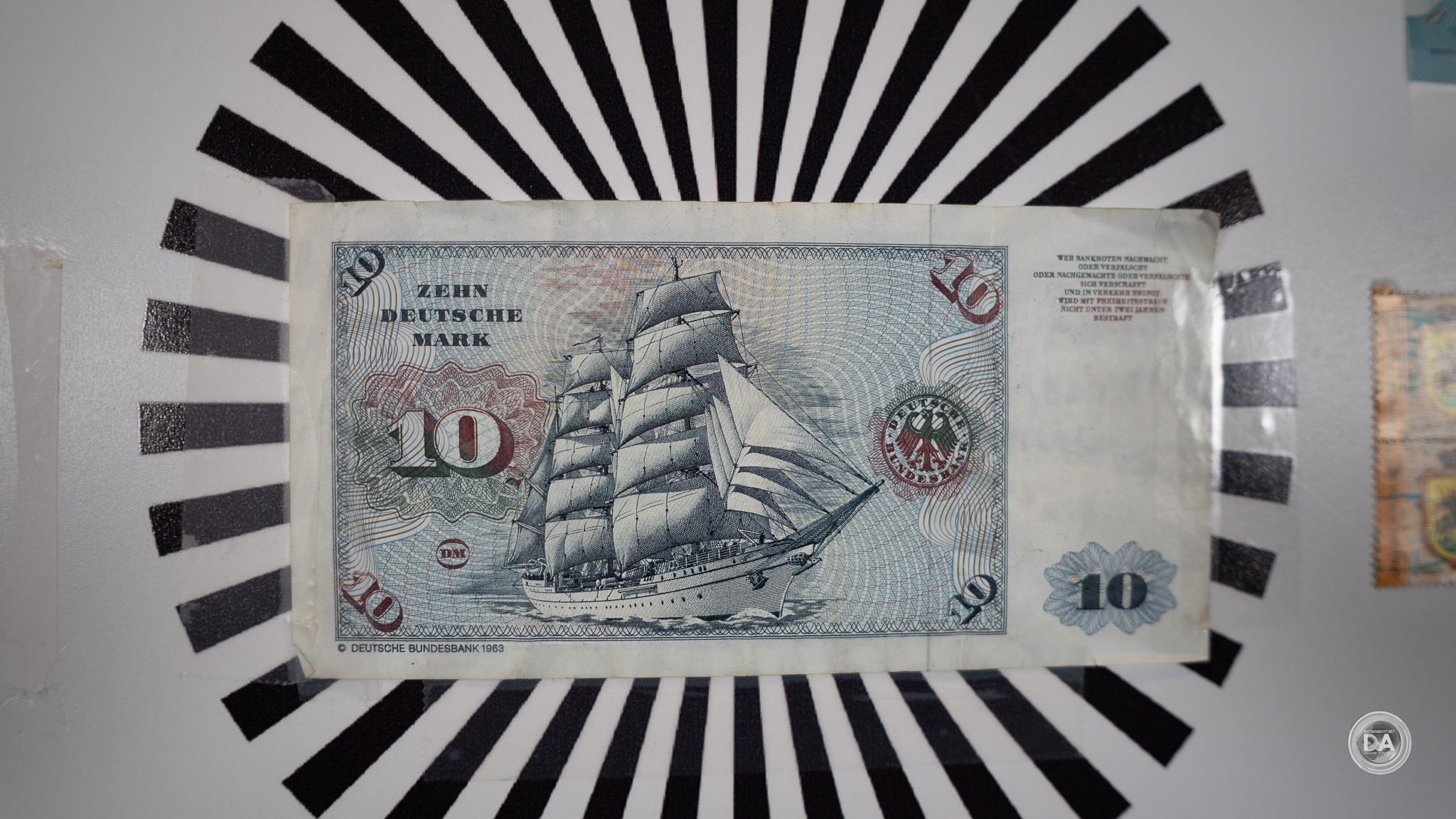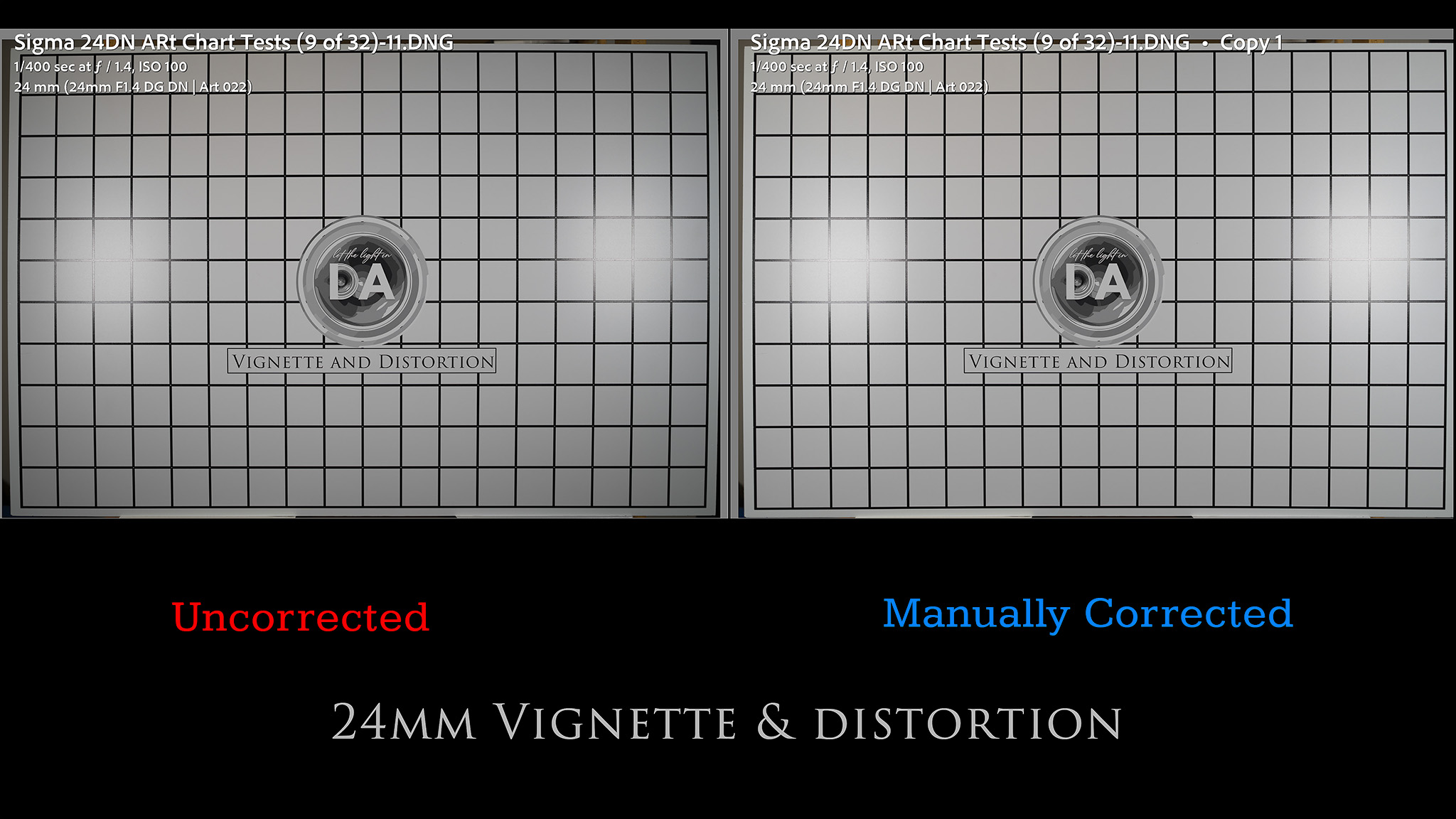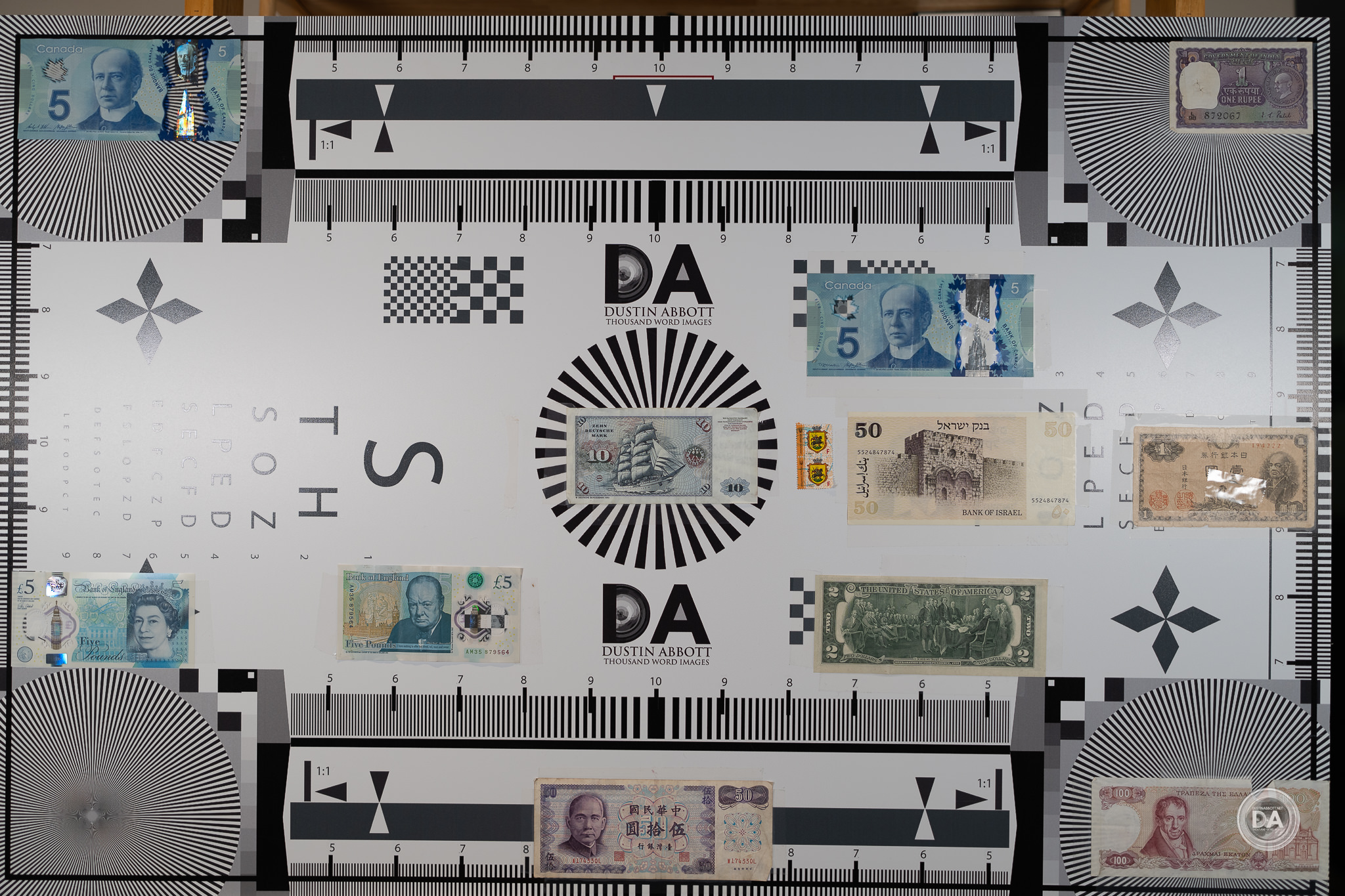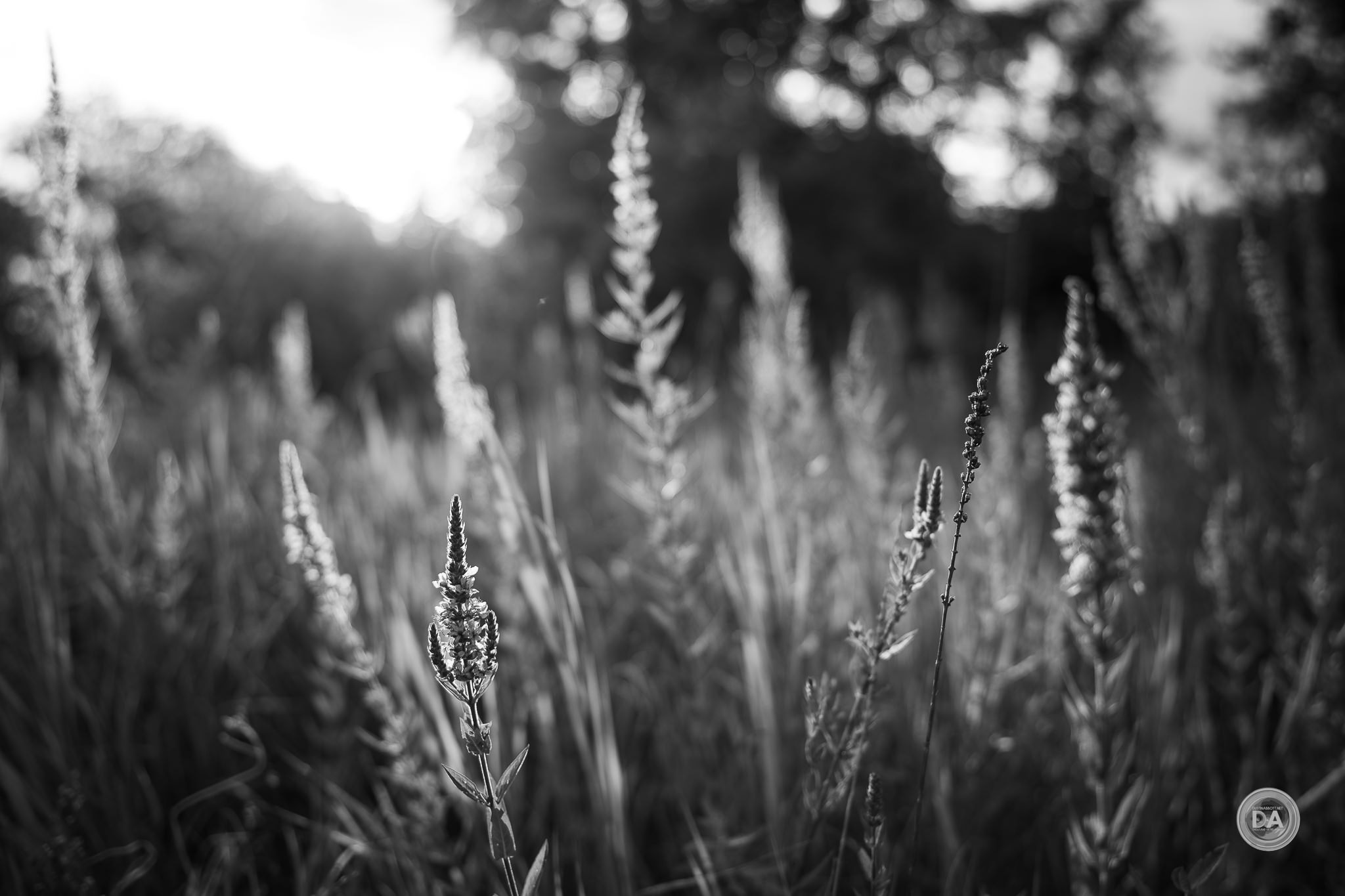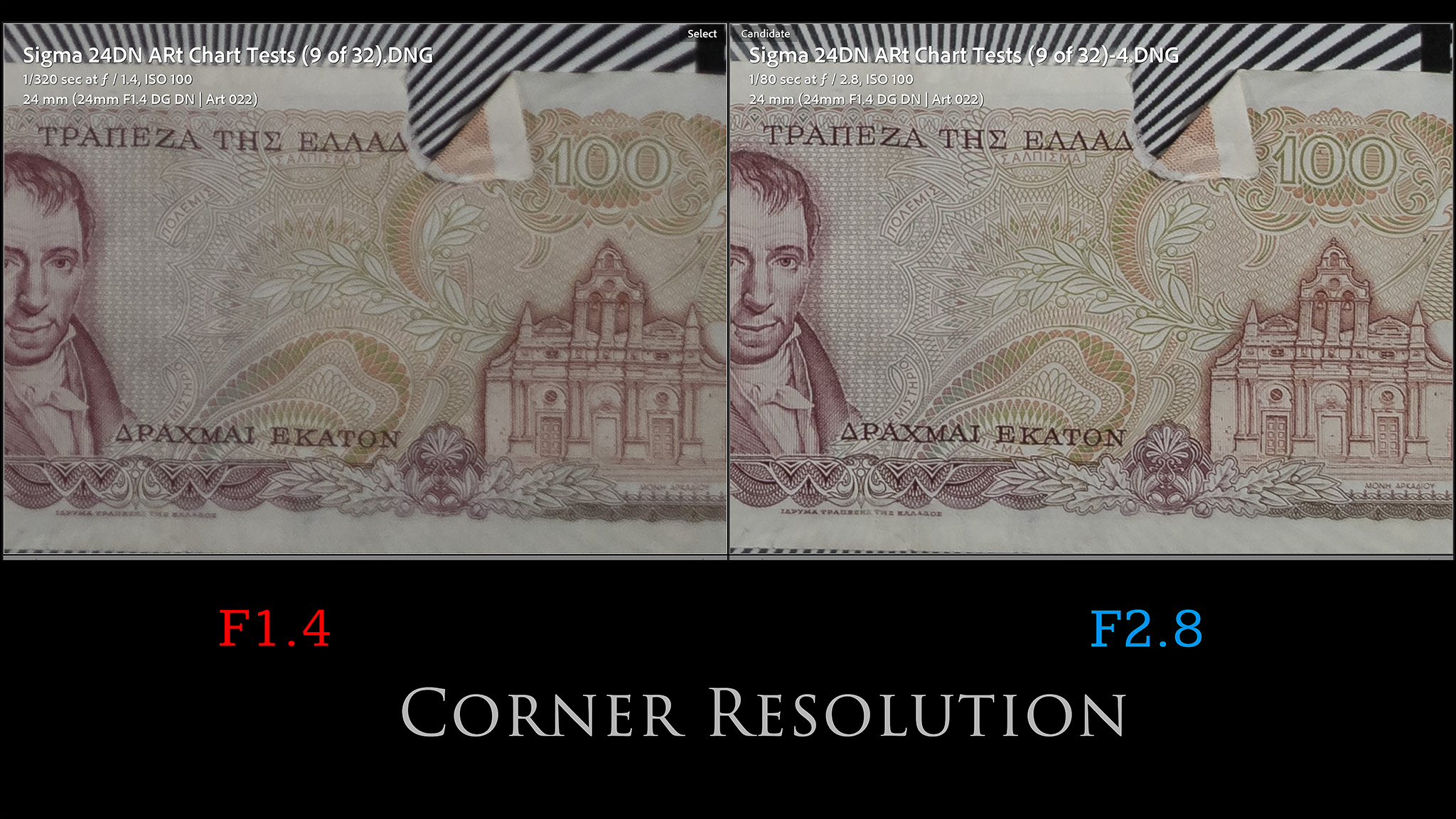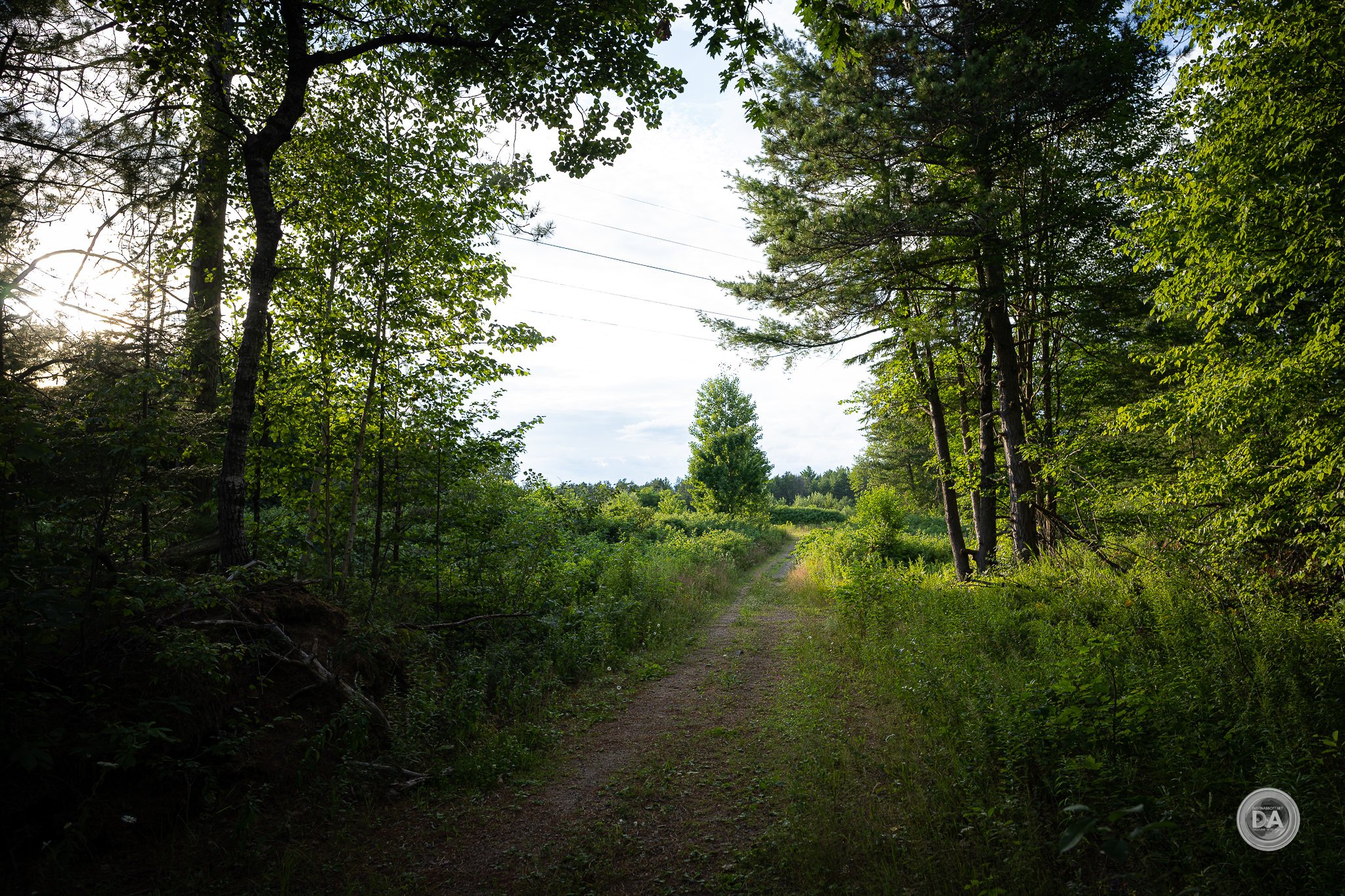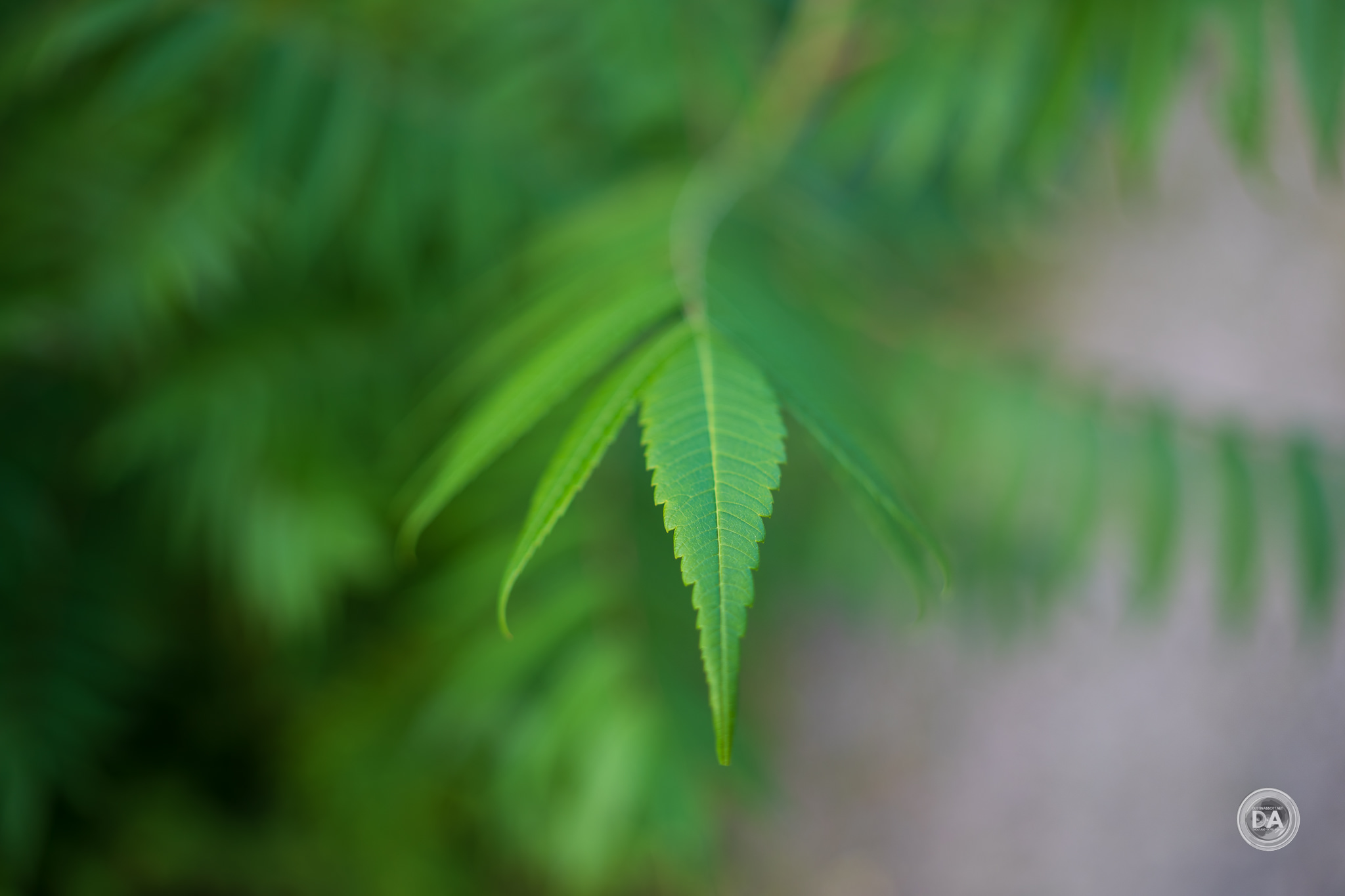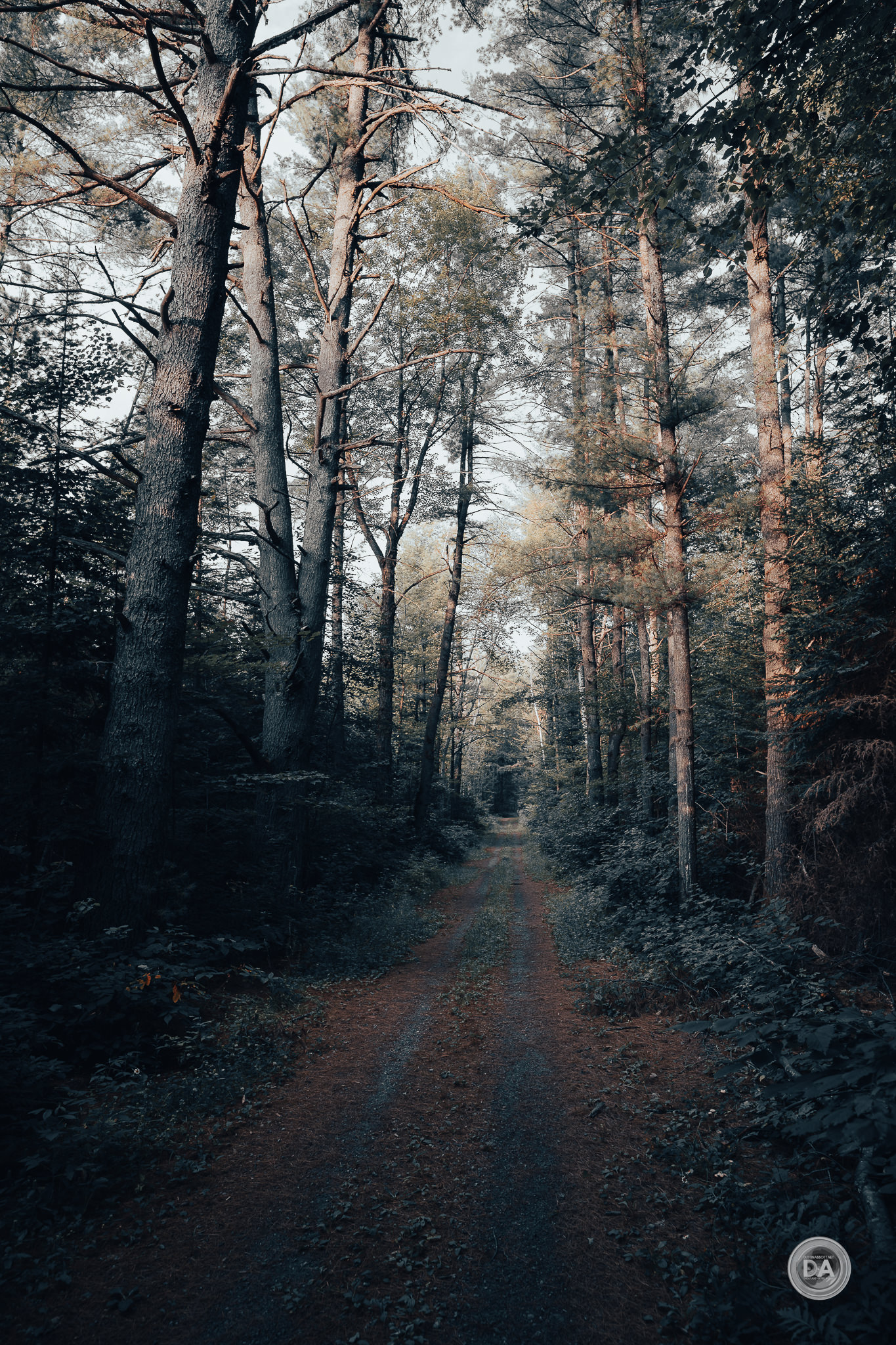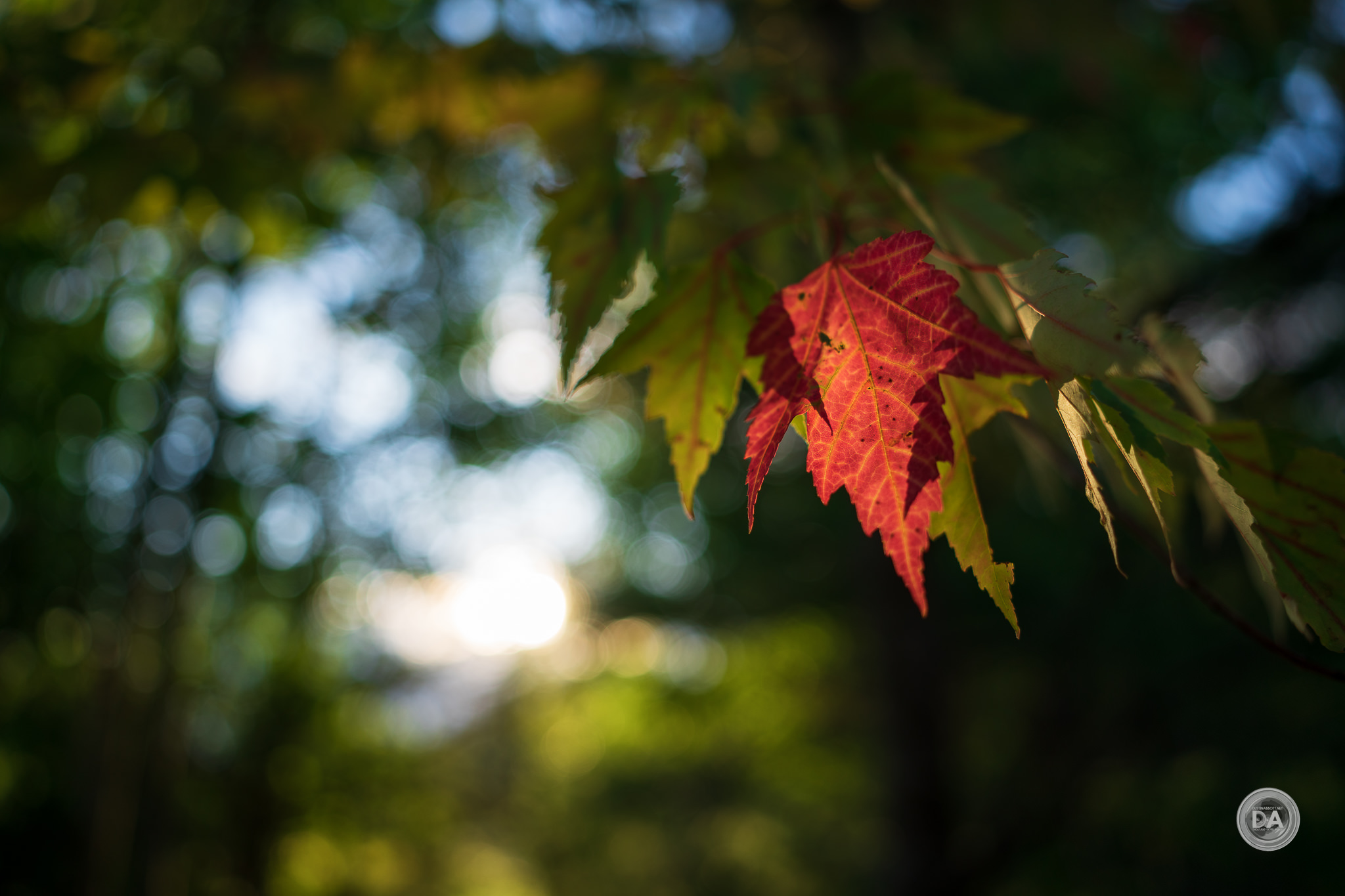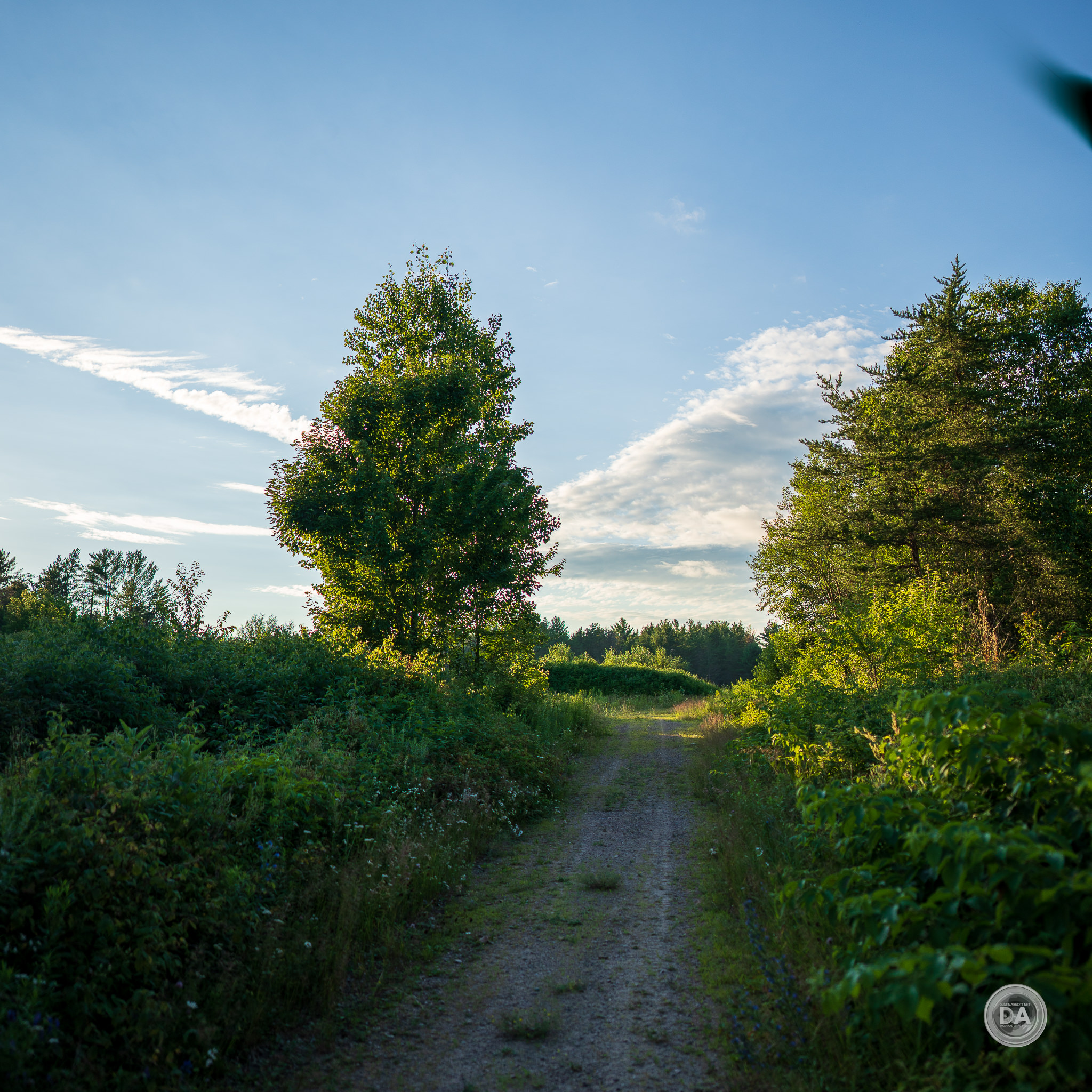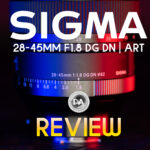The original 24mm F1.4 ART was (I believe) the only Sigma ART lens that I missed reviewing at its time of release (in 2015). I rectified that in 2018 when I reviewed the newly released version of the lens for Sony FE (full frame mirrorless). My review of that lens was mixed, as I felt that it (like all of the new Sigma releases for Sony at that time) was compromised by essentially being a “port” of the Canon EF version of the lens (more on that in a moment) and because I felt that Sigma ART lenses had gotten so much better with time (both optically and functionally). Fast forward to 2022, and Sigma has an all new lens designed from the ground up for mirrorless – the Sigma 24mm F1.4 DG DN ART (referred to hereafter as the 24DN ART for brevity) – and it has improved on its predecessors in basically every way. It is released alongside the also new Sigma 20mm F1.4 DN ART, which is an amazing lens that I reviewed here.
DN is the designation Sigma uses for its purpose designed mirrorless lenses, so, while there is an existing 24mm F1.4 ART lens for Sony E and Leica L, that lens is (as noted) a “ported” DSLR lens (that will almost certainly be discontinued in the near future). Because the lens was originally designed for DSLRs, Sigma had to move the optical path forward to achieve proper focus and to accommodate what was essentially a built-in adapter to allow the focus to work properly on Sony and Leica mirrorless. That resulted in the lens being A) bigger and heavier than it needs to be (almost 36mm longer [126mm] and 103g heavier [768g] than the DSLR version) and B) has an adapted autofocus system which works fairly well but not as well as a lens natively designed for mirrorless autofocus. The new 24DN ART is closer in size to the original DSLR lens (75.7mm in diameter and 97.5mm in length) and weighs 150g less at 510g (3 x 3.8” and 18 oz). That makes the new DN lens narrower by a fair bit (almost 10mm) but also a bit longer (7mm) than the original Canon EF 24mm F1.4 ART. The new DN lens is not what you would call a small lens, but it is considerably smaller and lighter than the previous edition, and, more importantly, much closer in size to its main competition – the Sony 24mm F1.4 G Master, which I reviewed here. The GM lens is the same diameter, 5mm shorter, and weighs 65g less, but the two are now similar enough in size that this should be a non-issue…and the Sigma has even more features than the GM!
Sigma has taken a bifurcated approach to lens design on mirrorless, with smaller size, smaller aperture options in their “i-Series” (which they put under their “Contemporary” brand umbrella) and then more robust, larger aperture, professional grade lenses under their “ART” brand. Sigma has been busy over the past year and a half at the 24mm focal length, releasing an extremely compact 24mm F3.5 DN (my review here), a 24mm F2 DN (my review here) and now this new professional grade F1.4 ART lens. Sigma clearly feels like there are separate markets for each of these lenses, and the new 24DN ART is clearly targeted at the audience who would otherwise be considering the G Master.
I’m much more positive about this new ART lens than I was about the former lens, as it seems like the new 24DN ART is improved in virtually every way. It delivers incredible image quality even at F1.4, focuses accurately, has a very nice build quality (including weather sealing), and has a huge feature set that we will detail in a moment. All of this at a price point that is hundreds less than any competing first party lens, and you’ve got yourself a potential winner…and one easy to make beautiful images with!
So does the Sigma 24mm F1.4 DN ART hold up under intense scrutiny? You can judge for yourself by either watching my video review below or reading on to get the full picture.
Follow Me @ YouTube | Patreon | Instagram | Facebook | DA Merchandise | Flickr | 500px
Thanks to Gentec (Sigma’s Canadian Distributor) for sending me a pre-release review loaner of this lens. As always, this is a completely independent review. *The tests and most of the photos that I share as a part of my review cycle have been done with the Sony a7IV along with the Sony Alpha 1 which will serve as my benchmark camera for the foreseeable future (my review here).
Sigma 24DN ART Build and Handling
As noted in the intro, the Sigma 24DN ART is competitively sized, and, if not quite as compact as the Sony G Master, it can at least stake its claim as the smallest and lightest of the ART series primes released on Sony FE and Leica L thus far. Here’s a look at how it compares to the larger 20mm F1.4 DN and the 85mm F1.4 DN (that I personally own).
I’ve watched Sigma ramp up the features on their premium lenses for mirrorless, and these two new releases are the most feature rich yet. That starts with a robust approach to aperture control. You have a manual aperture ring that can be controlled with “clicks” (with detents at every 1/3rd stop), you can switch it into A (automatic) mode and control aperture from within the camera, or you can flick a switch and have a declicked aperture for video use. And, in a unique Sigma feature, you can employ an aperture lock that serves to keep you either from the manual aperture section (if you don’t like using an aperture ring) or from inadvertently switching into automatic mode if you prefer using the aperture ring.
That’s a lot of control over how to approach aperture, and its worth noting that all of Sigma’s switches have a nice two-tone look where you can see white if engage in one direction or black if engaged in the opposite direction. The aperture iris itself has a high blade count of 11, which makes for a nicely rounded aperture even stopped down.
There is an AF/MF switch along with a focus hold button (which can be programmed to various functions from within the camera). Both of these are very welcome as they add functionality to the control of the lens.
There is also a new feature here that is really designed with astrophotographers in mind, and that is a lock button for the manual focus ring. This allows you to preset a focus position (like for the stars) and lock it into place. That would allow you to transport the lens on site (in the dark) and know that focus is already in the proper position.
All of this adds up to a lens that has several more features than what the high end Sony G-Master sports.
There is a familiar design ethos that utilizes a variety of textures at different points for both functional and aesthetic purposes, which includes the lens hood. I always like the rubberized section on the lens hood along with the narrow-ribbed ring that allows the lens hood to be gripped easily and gives a pleasing tactile feel in the process. The lens hood feels robust and sturdy, and has a lock to keep it from being inadvertently moved. The lens hood has a quality, well-engineered feel that is clearly superior to most that I encounter.
There is a nice nylon padded case also included with the lens.
Sigma now employs weather sealing in their better lenses, with a gasket at the rear mount but then also seal points internally as well. That helps inspire confidence in being able to use the lens in more situations.
The 24DN ART also has a new lip built into the front of the lens that is designed to help hold a lens heater in place for those that shoot in cold, moist conditions and want to prevent condensation from forming on the front element. I’ve not personally encountered this issue (or ever used a lens heater), but if you happen to be in the target audience for this feature, I’m sure you’ll be glad for it.
We’ve now got two different options for filtering the lens. Front filters can be screwed on in a standard 72mm size, and you can use rear filters as well. I’ve reviewed some rear filter options on the Sigma 14-24mm F2.8 ART (a great lens), so I know this can be valid option, though many people will probably prefer the traditional screw on filter option since it is available. Haida (the filter maker featured in the video I’ve just referenced) has confirmed that their filters that work for the 14-24mm will also work on this new 24DN ART. Having filtering options in both places does allow for simultaneous use in certain scenarios, which could be interesting. I noted that the rear filter holder on the 24mm ART lens is a little more sophisticated than the one found on the 20mm as it includes a locking arm to hold filters in place rather than just a slot to slide them in.
Minimum focus distance isn’t quite as close as the GM (24cm), but is still a very close 25cm (9.9”), which puts you fairly close to your subject. If you keep the lens hood on, the distance from the sensor to the front of the lens hood is 15.5cm, leaving only about 10cm of working range. Removing the hood gives you closer to 14cm of working distance and less chance of shading your subject. While the magnification level isn’t quite as high as the 20mm F1.4, I did note that the 24mm delivered better up-close results with better contrast and a flatter plane of focus. The magnification figure is only okay (0.14x, or 1:7.1), which lags behind the 0.17x of the GM.
I really enjoyed the 24DN ART for up close work, however, mostly because it delivered very nice detail and beautifully defocused backgrounds.
A nice close focus distance also means that during video capture you won’t have to worry about exceeding the focus limitation and getting too close to your subject.
All in all, the build quality and feature list of both of these new Sigma wide angle primes is pretty much top notch. They are well built, feature rich, and generally a joy to use in the field. Sigma is clearly making a concerted effort with many of these new DN lenses to reduce the size and weight relative to their DSLR ART series lenses, and the fact that they are managing to do while improving the performance is worthy of celebration.
Autofocus Performance
Sigma has settled on a formula for autofocus on their DN lenses that seems to work. There is a stepping focus motor (STM), though not all STM motors are created equally. The Sigma version employed here is one of the best, however, with silent, extremely fast autofocus that delivers good accuracy. I zoomed into image after image at saw pretty much perfect focus.
Focus is basically instantaneous in practical, real world use, and I felt a great deal of confidence while out hiking or shooting in that I would be able to quickly get the focus result I wanted on either my Sony a7IV or Alpha 1. And yes, both of these cameras have similarly excellent focus systems, but I feel confident that people will be very happy with autofocus on most of the Sony E-mount or Leica L-mount cameras on the market today.
Image capture was pretty much effortless whether I was shooting closer, large aperture images like this:
…or shooting landscape images near infinity.
Autofocus just worked, period.
Both of these new lenses (20mm and 24mm) will certainly be prized by wedding and portrait photographers and videographers who want to capture environmental portraits. I would view either of these as nice compliments to a longer focal length like the 85mm F1.4 DN (a great portrait lens!) or (hopefully!) an upcoming 50mm F1.4 (or F1.2) DN lens from Sigma.
Video focus pulls are snappy and confident with no sound, drama, or pulsing. There’s a bit more focus breathing on the 24mm than the 20mm, but it wasn’t excessive. While capturing video the two new lenses will also be compatible with AF assist on Sony FE – though that’s on compatible cameras that have this function (my a7IV does, fortunately). It’s an interesting feature that allows you to manually focus during video capture on a certain object or subject, but the lens will continue to autofocus on that object even after you stop doing the manual adjustment. This is a unique way to set focus on something and then allow autofocus to do the heavy lifting after that.
All in all, autofocus is good enough that you will instantly forget about it and instead be able to focus on the images you are creating.
Sigma 24DN ART Image Quality
The upgrade in optical performance over the previous version of the lens isn’t as extreme as I saw with the 20mm F1.4, there is still an improvement in the consistency of sharpness across the frame with roughly a 15 point improvement in the mid-frame and corners.
That’s enough to make it very competitive with the G Master lens, which shows a similar sharpness profile with just a little better performance in the corners at F1.4. I found that real world results from the Sigma showed a lot of pop even at F1.4.
Longitudinal chromatic aberrations (LoCA) typically show up as purple/magenta fringing before the plane of focus and blue/green fringing beyond the plane of focus due to colors not being perfectly focused together. They typically diminish as the lens is stopped down to smaller apertures. A wide angle lens like this has less opportunity for the kind of shallow depth of field images where LoCA is most likely to show up, but the F1.4 aperture and close focus distance does make shallow DOF images possible. I saw some very mild fringing beyond the plane of focus in some high transition areas (and in some high contrast bokeh circles), but nothing significant.
Lateral chromatic aberrations (LaCA) show up as fringing on either side of contrast areas (like tree trunks, for example) along the edges of the frame. Unlike LoCA, they do not improve when stopping the aperture down, but are much easier to correct for (typically a one click “remove chromatic aberrations” box in editing software). I saw only minimal fringing in the high contrast areas of the bare branches against the bright sky in this image, but once again I had to go looking for the CA as it didn’t really show up as something I observed in normal shooting and editing.
There’s not enough fringing to reduce contrast at all, and real world results look fantastic.
Next we will take a look at distortion and vignette. I’ve criticized some recent Sigma lenses on one or both of these areas, but that’s not going to be the case here.
You can see that there is a very mild amount of barrel distortion (+3 to correct), which is definitely a very low figure for a wide-angle lens. Vignette isn’t moderate even at F1.4, requiring a +49 to correct for it (around two stops). There’s nothing here that concerns me at all, and Sigma lenses receive generous in-camera support, so JPEGs and video will be corrected in camera, and only RAW images (like those I’ve shown) will require using a correction profile in post.
So how about sharpness? We’ll do our formal test on the full frame (35mm) image circle that the lens is designed for, using the 50MP Sony Alpha 1 for this series of tests. Here’s a look at the test chart:
And here are the F1.4 crops at nearly 200% magnification, taken from the center, then mid-frame, and then extreme lower right corner:
While contrast doesn’t match the exceptional levels we saw with the 20mm ART at F1.4, there is still a lot of detail across the frame with only some reduced contrast in the corners.
Real world images at F1.4 tend to rely less on the corners anyway, and I was very pleased with what I saw:
I selected a crop from a point lower in the frame, and yet the detail and contrast is just exquisite…and the bokeh rendering is nice, too.
At F1.8 there is an obvious improvement to the contrast (and the corners are looking better already), with a slight bit more at F2, and then a slightly bigger jump at F2.8. By F2.8 the corners are now looking excellent – a huge improvement from the wide open appearance:
There’s a bit more to be had at F4 and F5.6, but you are very close to realizing top potential even by F2.8. So, when stopped down just a little bit, you’ll find the Sigma 24DN ART pin sharp across the frame. Here’s a real world landscape with a fairly flat plane of focus. You can see that there is great sharpness all across the horizon line:
Bottom line is that the Sigma 24mm F1.4 DN ART is going to compete well with the very best at this focal length…and at a lower price point. There is rich detail all across the frame even on a high resolution body like my Alpha 1:
The 11 blades of the aperture iris also provide an interesting sunburst to images when the aperture is stopped down. It’s slightly busy, but the blades are pretty well defined and I like the look in general.
You can see that the shot above was shot directly into the sun, but flare resistance is quite good. There’s no obvious veiling and only very minor ghosting.
Here’s a wide open shot strongly backlit by the evening sun, and you can see that the image is holding up nicely.
In all cases contrast was retained and the final images look great.
I felt like the bokeh quality was better than average for a wide angle lens. Despite that wide angle of view I felt I was able to get nicely defocused backgrounds…particularly at closer focus distances. This shot of Sumac leaves nicely illustrates the point, as it has a lot of transition from focus to defocus.
This high contrast golf shot shows that you can produce a very shallow depth of field up close.
A low angle shot of a mushroom shows a lot of bokeh highlights, and you can see that while there is some “lemon-shapes” along the edges at F1.4, the quality of the bokeh in general is nice, and the subject has nice contrast and “pop” to it.
Sigma is keying in on the astrophotography potential of this lens, and with (mostly) good reason. My caveat is that I did this review in mid to late July, which here in the North is not a great time for astro work. It doesn’t get particularly dark and so I can’t produce my best results aesthetically. I was also competing with a lot of clouds at night over my review period, and with enough ambient light even well after 10 PM (when I shot these images), the clouds tended to dominate the stars. Here was the result:
Coma is pretty well controlled, with only a slight bit of “winged” stars towards the edges of the frame. The star points in the center are very sharp and crisp even at F1.4, and while the brightest stars along the edge are slightly deformed by coma, the overall look is quite good. The 20mm F1.4 is a little sharper than the 24mm being reviewed here, but the 24DN ART does have the advantage of lower vignette that will help in night sky photos.
In general, however, I think this is a great wide angle lens. Images have a lot of pop, good color, great detail, and few optical flaws. I noted with both of these Sigmas that they were very easy to use in the field and also easy to process from. Images just had a great look to begin with, which left me free to process according to my imagination rather than trying to fix flaws.
All in all, I think Sigma has nailed this lens in the optical department. If you would like to see more images, check out my image gallery here.
Conclusion
In conclusion, I’m pretty delighted with what Sigma has managed to accomplish with the new 24mm F1.4 DG DN ART. This is a much more competitive lens to the benchmark of the Sony 24mm F1.4 G Master, and the Sigma promises to undercut that lens by some $500 in price while also offering more features.
Those owning a Sony E-mount or Leica L-mount full frame camera and who are looking for a 24mm prime should give this lens a long look. It’s beautifully built, feature rich, has strong autofocus, and delivers an excellent optical performance.
All of this and a price point around $800 USD makes this a pro-grade lens at a mid-range price, which remains perhaps the best niche for Sigma lenses in general. The new Sigma 20mm F1.4 DN ART and 24mm F1.4 DN ART are Sigma at their best.
Pros:
- Very feature rich lens
- Very flexible approach to controlling aperture
- Ability use standard screw-in filters
- Also has rear filter holder
- Some good astrophotography features
- Very low distortion for such a wide angle lens
- Well controlled vignette for an F1.4 lens
- Very good optical performance even at F1.4
- Extremely sharp across the frame from F2.8 on
- Excellent flare resistance
- Good coma performance
- Excellent price to performance ratio
Cons:
- Contrast in the corners lags behind center wide open
- Still a little bigger and heavier than the GM
Purchase the Sigma 24mm F1.4 DN ART @ B&H Photo | Amazon | Camera Canada | Amazon Canada | Amazon UK | Amazon Germany
Purchase the Sigma 20mm F1.4 DN ART @ B&H Photo | Amazon | Camera Canada | Amazon Canada | Amazon UK | Amazon Germany
Purchase the Sony a7IV @ B&H Photo | Amazon | Camera Canada | Amazon Canada | Amazon UK | Amazon Germany
Purchase the Sony Alpha 1 @ Camera Canada | B&H Photo | Amazon | Amazon Canada | Amazon UK | Amazon Germany | Ebay
Purchase a Sony a9M2 @ B&H Photo | Amazon | Camera Canada | Amazon Canada | Amazon UK | Amazon Germany | Ebay
Want to support this channel? Use these affiliate links to shop at: B&H Photo | Amazon | | Camera Canada | Ebay | Make a donation via Paypal
Buy DA Merchandise https://bit.ly/TWIMerch
Peak Design Leash Strap: Peak Design Store | B&H Photo | Amazon | Amazon Canada | Amazon UK
Adobe Photoshop Creative Cloud 1-Year Subscription
Get a discount off all Skylum Editing Software (Luminar, Aurora HDR, AirMagic) by using code DUSTINHDR at checkout:
Visit Dustin’s Amazon Storefront and see his favorite gear
Purchasing your gear through B&H and these links helps fund this website and keeps the articles coming. You can also make a donation here if you would like. Visit my Amazon page for some of my gear of choice! Thank you for your support.
Purchasing your gear through B&H and these links helps fund this website and keeps the articles coming. You can also make a donation here if you would like. Visit my Amazon page for some of my gear of choice! Thank you for your support.
Receive a 5% discount on all purchases at Amplis Foto, Canada’s Leading Photographic Supplier. Please enter discount code: AMPLIS52018DA in your cart. It is good for everything in your cart, and is stackable with other coupons, too! It will take 5% off your entire order! Proceeds go towards keeping this site going and providing you with new reviews!
Use Code “DUSTINHDR” to get $10 off ($15 CDN) any Skylum product: Luminar, Aurora, or AirMagic
Keywords: Sigma 24mm F1.4, Sigma 24mm F1.4 DN, ART, DN, DG, Sigma 24mm F1.4 DG DN ART, Sigma 24mm F1.4 DN Review, 24mm F1.4, 20mm DN, Full Frame, Review, Sony Alpha 1, Sony a7IV, Review, Hands On, Dustin Abbott, Real World, Comparison, Sharpness, Bokeh, Flare Resistance, Autofocus, Image Quality, Sample Images, Video, Photography, Sony a9, Sony a7IV, Sony Alpha 1, Sony A1, let the light in, #letthelightin, DA


